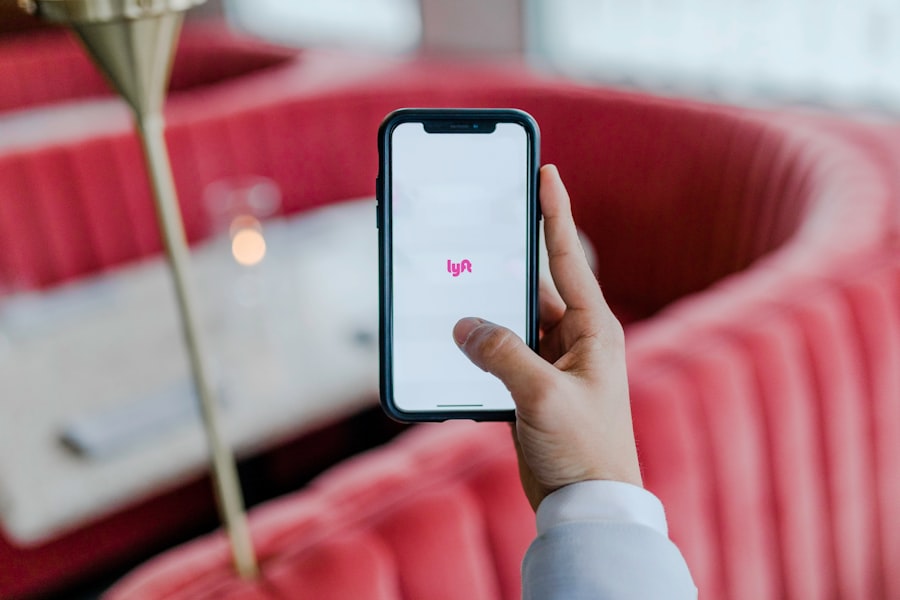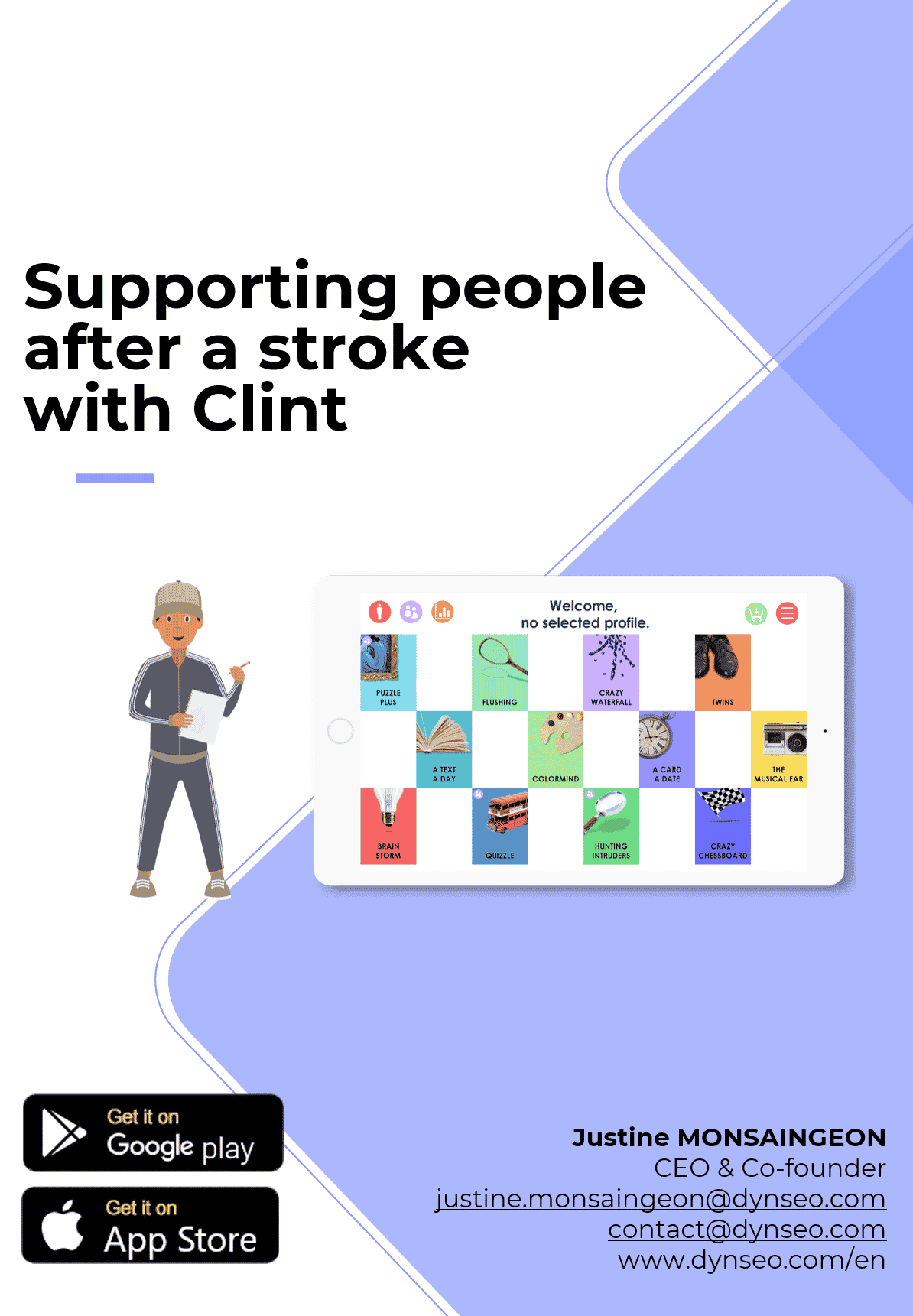In the journey of post-stroke recovery, cognitive apps have emerged as invaluable tools that can significantly enhance rehabilitation efforts. These applications are designed to stimulate cognitive functions, which may be impaired following a stroke. By engaging patients in various brain exercises, these apps can help improve memory, attention, and problem-solving skills.
The interactive nature of cognitive apps makes them appealing to users, encouraging consistent practice and engagement. As we navigate through the complexities of recovery, we find that these digital resources not only provide structured activities but also offer a sense of accomplishment and motivation, which are crucial for emotional well-being during rehabilitation. Moreover, cognitive apps can be tailored to meet the specific needs of post-stroke patients, allowing for personalized rehabilitation experiences.
For instance, our Clint app is specifically designed to cater to adults recovering from strokes, offering a range of brain games that target various cognitive skills. This adaptability ensures that patients can work at their own pace and focus on areas that require the most attention. As we embrace technology in rehabilitation, we recognize that cognitive apps serve as a bridge between traditional therapy and modern approaches, making recovery more accessible and engaging for patients.
Selecting the Right Cognitive Apps for Speech Therapy
Choosing the appropriate cognitive apps for speech therapy is a critical step in ensuring effective rehabilitation for post-stroke patients. With a plethora of options available, it is essential to consider the specific needs and goals of each individual. We must evaluate the features of different apps, such as their focus on language skills, vocabulary building, and conversational practice.
For instance, our Clint app offers a variety of exercises that can help improve speech clarity and language comprehension, making it an excellent choice for those looking to regain their communication skills after a stroke. In addition to functionality, we should also consider the user interface and overall user experience of the app. An intuitive design can significantly enhance engagement and reduce frustration during therapy sessions.
As we explore various cognitive apps, we should prioritize those that offer clear instructions and visually appealing layouts. This attention to detail can make a substantial difference in how patients interact with the app and their willingness to participate in therapy. By carefully selecting the right cognitive apps, we can create a supportive environment that fosters progress and encourages patients to take an active role in their recovery.
Incorporating Cognitive Apps into Speech Therapy Sessions

Integrating cognitive apps into speech therapy sessions can revolutionize how we approach rehabilitation for post-stroke patients. These digital tools enhance traditional methods, offering a more engaging and personalized therapy experience. Below, we explore the benefits of using cognitive apps and provide practical examples of their application in therapy.
Key Benefits of Cognitive Apps in Speech Therapy
- Enhanced Patient Engagement
Cognitive apps help keep therapy sessions dynamic and captivating. For instance, after starting with traditional exercises like repeating sounds or practicing articulation, a therapist might transition to using an app like Clint. This app could focus on tailored challenges such as sentence formation, phoneme articulation, or speech rhythm. The interactive nature of the app keeps patients motivated and involved. - Real-Time Progress Tracking
Apps often provide immediate feedback on performance, allowing therapists to track a patient’s progress as they complete tasks. For example, a patient working on improving fluency might use an app to practice reading aloud. The app could analyze their speed and accuracy, helping therapists identify patterns and areas for improvement. - Personalized Feedback
During sessions, therapists can observe how patients perform on app-based tasks and provide real-time guidance. For example, if a patient struggles with certain sounds, the app can highlight these areas, enabling the therapist to adjust the session accordingly. This immediate feedback loop fosters a supportive and adaptive learning environment. - Variety and Flexibility
Incorporating apps offers a wide range of activities to suit different patient needs. For instance:- Apps for memory and recall exercises can support patients with cognitive-linguistic challenges.
- Interactive speech games can help younger patients practice articulation in a fun and stress-free way.
- Apps with visual and auditory cues can assist patients with aphasia in reconnecting words and meanings.
- Boosting Patient Confidence
By practicing independently with apps between therapy sessions, patients can build confidence in their skills. This additional practice complements in-session work and accelerates their progress.
Practical Workflow Example
A typical session incorporating cognitive apps might look like this:
- Warm-Up: Begin with traditional exercises, such as vocal warm-ups or repeating key sounds.
- App Engagement: Transition to a cognitive app like Clint for specific challenges. For instance:
- Practicing word retrieval with timed games.
- Enhancing fluency by reading passages aloud while the app tracks accuracy.
- Feedback and Adjustment: Review the app’s feedback and discuss areas for improvement. Tailor subsequent exercises to address specific difficulties identified by the app.
- Independent Practice: Assign app-based tasks for the patient to complete at home, ensuring consistent practice and progress.
Customizing Cognitive Apps for Individual Patient Needs
One of the most significant advantages of cognitive apps is their ability to be customized according to individual patient needs. Each post-stroke patient presents unique challenges and goals, and it is essential for us to tailor our approach accordingly. With our Clint app, we have the flexibility to adjust difficulty levels and select specific exercises that align with each patient’s recovery objectives.
This personalized approach not only enhances engagement but also ensures that patients are working on skills that are most relevant to their rehabilitation journey. In addition to adjusting difficulty levels, we can also incorporate patient preferences into the customization process. For instance, some patients may respond better to visual stimuli, while others may prefer auditory cues.
By understanding these preferences and adapting the app’s settings accordingly, we can create a more effective therapeutic experience. This level of customization empowers patients by giving them a sense of ownership over their recovery process, ultimately leading to improved outcomes as they work towards regaining their speech and cognitive abilities.
Monitoring and Evaluating Progress with Cognitive Apps
Monitoring and evaluating progress is a crucial aspect of any rehabilitation program, and cognitive apps provide us with valuable tools to track patient development over time. With features that allow us to record performance metrics and analyze trends, we can gain insights into how well our patients are responding to therapy. For instance, our Clint app offers detailed reports on completed exercises, highlighting areas of strength and those requiring further attention.
This data-driven approach enables us to make informed decisions about future therapy sessions and adjust our strategies as needed. Moreover, regular progress evaluations foster open communication between us and our patients. By sharing performance data with them, we can celebrate achievements together and identify areas for improvement collaboratively.
This transparency not only motivates patients but also reinforces their commitment to the rehabilitation process. As we utilize cognitive apps for monitoring progress, we create a supportive environment where patients feel empowered to take an active role in their recovery journey.
Addressing Challenges and Limitations of Cognitive Apps in Speech Therapy

While cognitive apps offer numerous benefits in speech therapy for post-stroke patients, it is essential for us to acknowledge the challenges and limitations they may present. One significant concern is the potential for technology-related frustrations among some patients, particularly those who may not be as familiar with digital devices or applications. As we introduce cognitive apps into therapy sessions, we must be mindful of these challenges and provide adequate support to ensure that all patients feel comfortable using the technology.
Additionally, it is important to recognize that cognitive apps should complement traditional therapy rather than replace it entirely. While these digital tools can enhance engagement and provide valuable practice opportunities, they cannot replicate the personalized interaction and guidance that comes from working with a trained therapist. As we navigate this landscape, we must strike a balance between utilizing cognitive apps effectively while maintaining the essential human connection that is vital for successful rehabilitation.
Collaborating with Patients and Caregivers in Cognitive App Usage
Collaboration with patients and caregivers is essential when incorporating cognitive apps into speech therapy practices. Engaging caregivers in the process not only enhances support for patients but also fosters a sense of teamwork that can significantly impact recovery outcomes. By involving caregivers in discussions about app usage and progress tracking, we create an environment where everyone is invested in the patient’s rehabilitation journey.
This collaborative approach ensures that caregivers are equipped with the knowledge and tools needed to reinforce therapy exercises at home. Furthermore, actively involving patients in decision-making regarding app usage empowers them to take ownership of their recovery process. We can encourage open dialogue about their preferences for specific exercises or features within the app, allowing them to feel more connected to their therapy.
This sense of agency can boost motivation and commitment to practice outside of formal sessions. By fostering collaboration among all parties involved in the rehabilitation process, we create a supportive network that enhances the effectiveness of cognitive apps in speech therapy.
Maximizing the Benefits of Cognitive Apps for Long-Term Recovery
To maximize the benefits of cognitive apps for long-term recovery in post-stroke patients, it is crucial for us to adopt a holistic approach that encompasses ongoing engagement and support. We should encourage patients to incorporate these apps into their daily routines beyond formal therapy sessions, reinforcing skills learned during rehabilitation. By establishing consistent practice habits, patients can continue to strengthen their cognitive abilities over time, leading to sustained improvements in speech and communication.
Additionally, as technology continues to evolve, we must stay informed about new developments in cognitive apps and their potential applications in speech therapy. Regularly updating our knowledge allows us to introduce innovative tools that can further enhance patient engagement and outcomes. By remaining proactive in our approach and fostering a culture of continuous learning among ourselves and our patients, we can ensure that cognitive apps remain an integral part of long-term recovery strategies for post-stroke individuals seeking to regain their speech capabilities.
For speech therapists seeking to enhance post-stroke recovery through cognitive apps, it’s essential to explore resources that provide comprehensive insights into the latest tools and strategies. A related article that could be particularly beneficial is found on Dynseo’s website, which discusses the role of technology in supporting elderly care, including those recovering from strokes. This article, available at Eugeria on Dynseo, offers valuable information on how cognitive apps can be integrated into therapy sessions, potentially improving outcomes for stroke survivors by maintaining and enhancing their cognitive functions.



